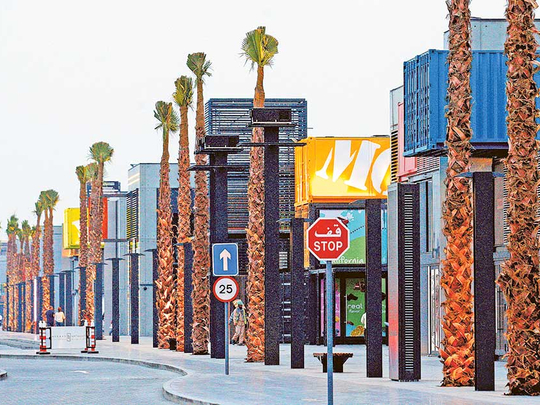
Dubai:
For UAE retailers, small is what’s trending right now. And it’s the best defence they have to combat the rental hikes landlords are imposing on them despite the extremely tough trading conditions over the last six to 12 months. The backlash against “unreasonable” rental demands is, clearly, building up.
Where possible, retailers are opting for smaller format stores — ideally with a sub Dh500 a square foot rental — and exiting larger ones to ensure they have a better grip on costs. “We have gone through a few such shifts in recent months — where possible we are locating and renting out 2,000 square feet outlets rather than 4,000 square feet,” said Dhananjay Datar, Managing Director at Al Adil Trading, the speciality Indian food commodities retailer.
“We had no trouble stocking the same amount of merchandise in a smaller store — then, where’s the need to stick with a bigger one? Our rental expenses are now at 12 per cent of our overall costs, which is way above the 8 per cent that is the ideal for our sort of business. It can’t be sustained.”
Such a shift in mindset also means that retailers are willing to consider emerging locations and even make a return to the high-street whereas earlier they would have preferred only malls.
A big boost has been provided by the upgrades and beautification works key commercial locations in the city has had in recent times. Areas in and around Bur Dubai, Karama and Al Ghusais have opened up opportunities for retailers. Deira — Dubai’s traditional commercial nerve centre — itself could see some sort of makeover.
Outside of the older city blocks, it’s a boom time for retailers — especially newly created single-store operators — chasing opportunities in the freehold communities. “Outlets with smaller footprints will attract trendy customers and, in the case of UAE, local residents in their communities and neighbourhoods,” said Sandra Hakim, Merchandising Manager at the Urbanist, which has a 150 square metre store in Boxpark, operated by Meraas.
“Definitely, the trend is to go for smaller format — but I think it is a global trend and not particularly a result of the UAE market situation. Customers in general, and in particular in the UAE, are tired of the big shopping centres that offer identical experiences with identical shops/brands and F&B.
“Larger formats will maintain their dominant market position in term of numbers but growth will be in the smaller formats.”
But Hakim warns that the perceived cost advantages from going for small need not be a permanent state. “Developers and landlords are well aware of the value of each option — so the net costs for retailers are at the end the same,” she added. “So, while there are more options, in terms of profitability they are all very similar.”
But retailers are glad they are getting the format options that never existed earlier. That meant they had to bide their time in the waiting list to even get a look-in at any of the leading malls in the city. Even Tier-B shopping centres had limited space and had rental demands more in tune with what a retail chain operator could afford.
“I would love to see this (a mix of format options) happening on a broader scale as this give smaller retailers the opportunity to establish themselves in a highly competitive market,” said Rabee Abu-Kishek, Managing Director and brand owner of Poupette A La Plage, which too has a presence at Boxpark. “What is also important to consider is the footfall size of the target market and the location of the outlet, both of which help maximise exposure to smaller brands.
“Bigger does not mean better and for new niche brands having a smaller size outlet is less risky and adds a ‘personalised’ dimension to a ‘new’ brand.”
More than anything else, it is the “emergence” of community centres that has spawned the trend of small-format stores. That along with the increased presence of single-store retailers and F&B operators Dubai has seen in recent years.
The trend has caught on that even the biggest names in local retail are thinking small as well. “We also believe that larger brands have also started investing in small or mid-sized store formats to grow their reach and get closer to their customers, while building a wider network of stores,” said Mahir Ali, Artistic and Operations Director at the bespoke tailoring firm Ascots & Chapels.
“Until five years ago, every other mall aspired to be a destination catering to a wide audience. Today, most developers plan community centres with essential services and a retail offering based on the size of the catchment area and their potential ticket value. This has inspired them to operate with smaller spaces and appeal to speciality retailers, home-grown brands and boutique operations.
“At the same time, mall operators are definitely more receptive and open to accommodating smaller formats.”











